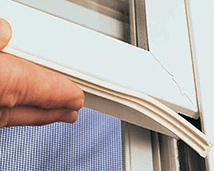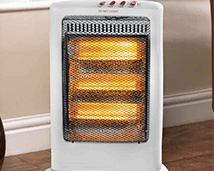When it comes to home energy costs and utility bills, winter is one of the most expensive times of the year. Fortunately, there are several things you can do to cut down on your energy bills and expenses during the coldest months of the year. And no, you don’t have to freeze to death in the process. Below are 7 tips to lowering your energy bills this winter.
1. Turn down the thermostat
No one wants their house to feel like an icebox in the winter. However, an expensive thermostat and electricity bill may not be worth the heat. Instead of turning up the temperature too much, wear warm clothes instead. It’s more worth it to invest in some wool socks and blankets than paying that extra cash per month.
2. Heat only the rooms you’re in
Many people have guest rooms or recreation rooms that are rarely used unless guests are in the home. If you have rooms that aren’t in use, shut the doors and seal the vents to conserve energy. After all, what’s the point of heating up the guest room when you have no guests to keep warm?
3. Use a humidifier
In the winter, your house may feel colder because the air is drier. Using a humidifier helps keep moisture in the air which allows it to hold heat better at lower temperatures. Not to mention, there are many additional benefits to using a humidifier in your home. These can include less irritated sinuses, more moisturized skin, less allergies, etc.
4. Perform regular maintenance on your furnace
 When your furnace is clean and well-maintained, it requires less energy to heat your home. Make sure you change your filter regularly. Additionally, keep your vents clean and unblocked. Always take care of any problems with your furnace as soon as they occur. This should bring down your heating bills.
When your furnace is clean and well-maintained, it requires less energy to heat your home. Make sure you change your filter regularly. Additionally, keep your vents clean and unblocked. Always take care of any problems with your furnace as soon as they occur. This should bring down your heating bills.
5. Use exhaust fans sparingly
The exhaust fans found in your bathroom and kitchen can drive up energy costs when used frequently. So, use these fans only when you must. Also, make sure to turn them off as soon as they are no longer needed.
6. Replace worn weatherstripping
The weatherstripping around windows and doors wears over time. This can lead to loss of heat through the spaces left behind. Replace worn weatherstripping to conserve heat and lower your energy bills. It’s a good idea to check the weatherstripping in your home every year before winter hits.
7. Use a portable heater
Portable heaters are typically less expensive to operate than your furnace. Instead of turning up the furnace and heating the entire house, purchase portable heaters and place them in the areas your family uses the most. Turn the heaters on only when people are using the space.
The information in this article is obtained from various sources. This content is offered for educational purposes only. It should not replace manuals or instructions provided by the manufacturer or the advice of a qualified professional. No warranty or appropriateness for a specific purpose is expressed or implied.


